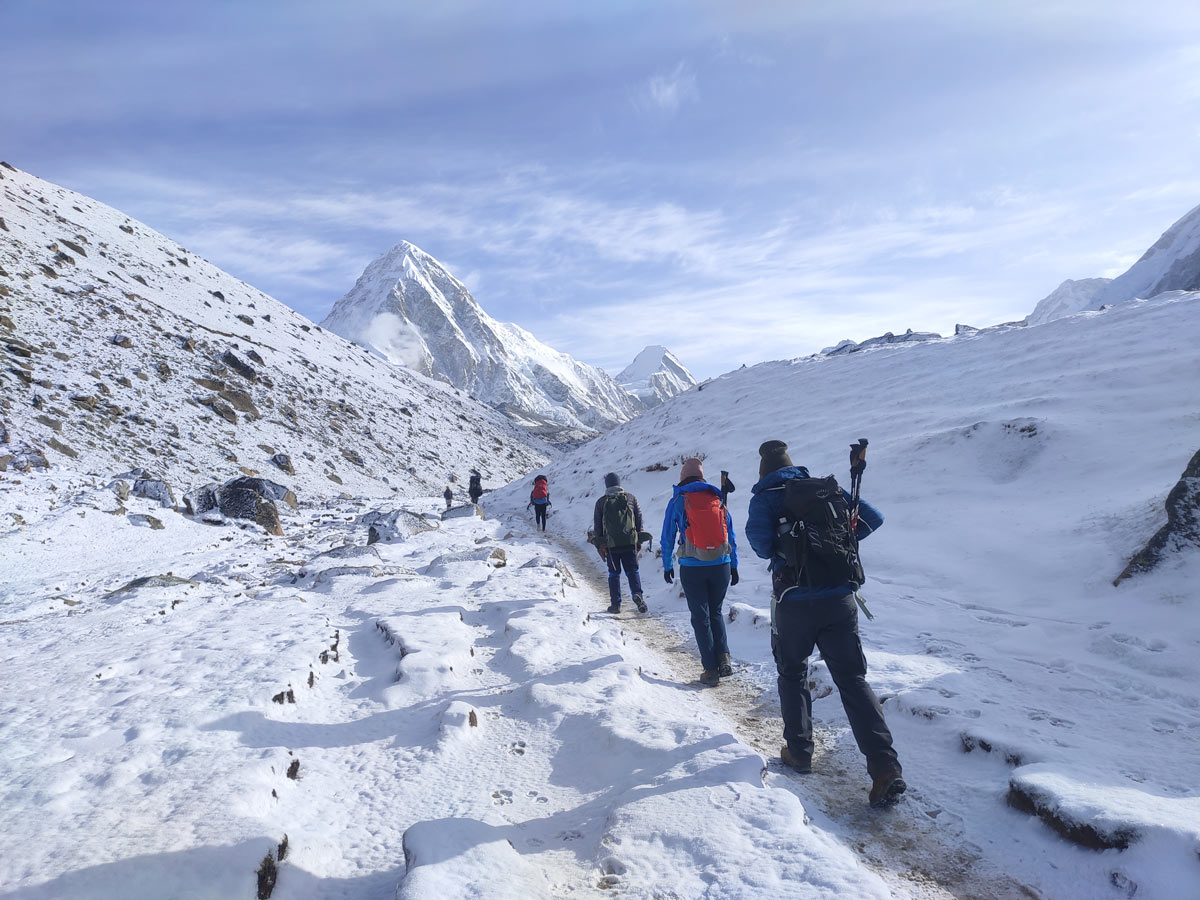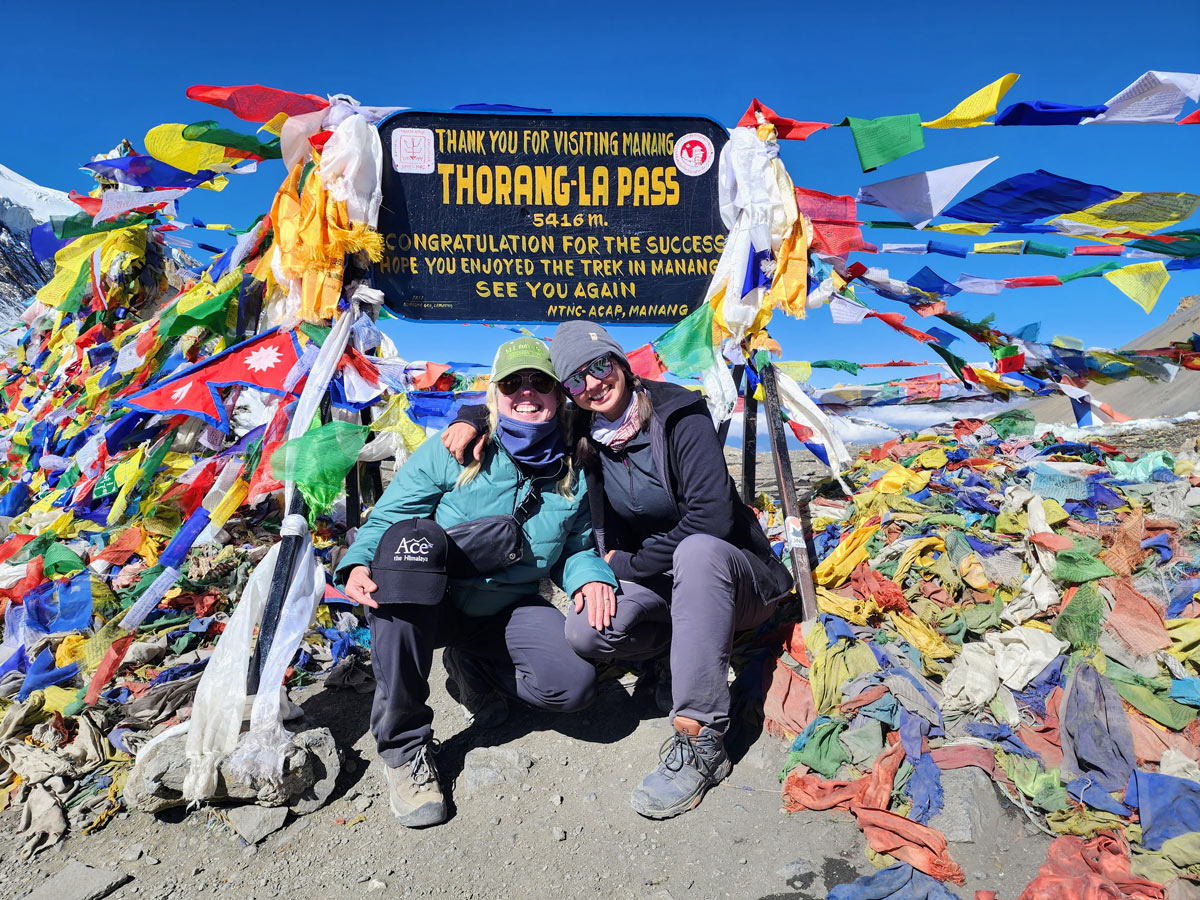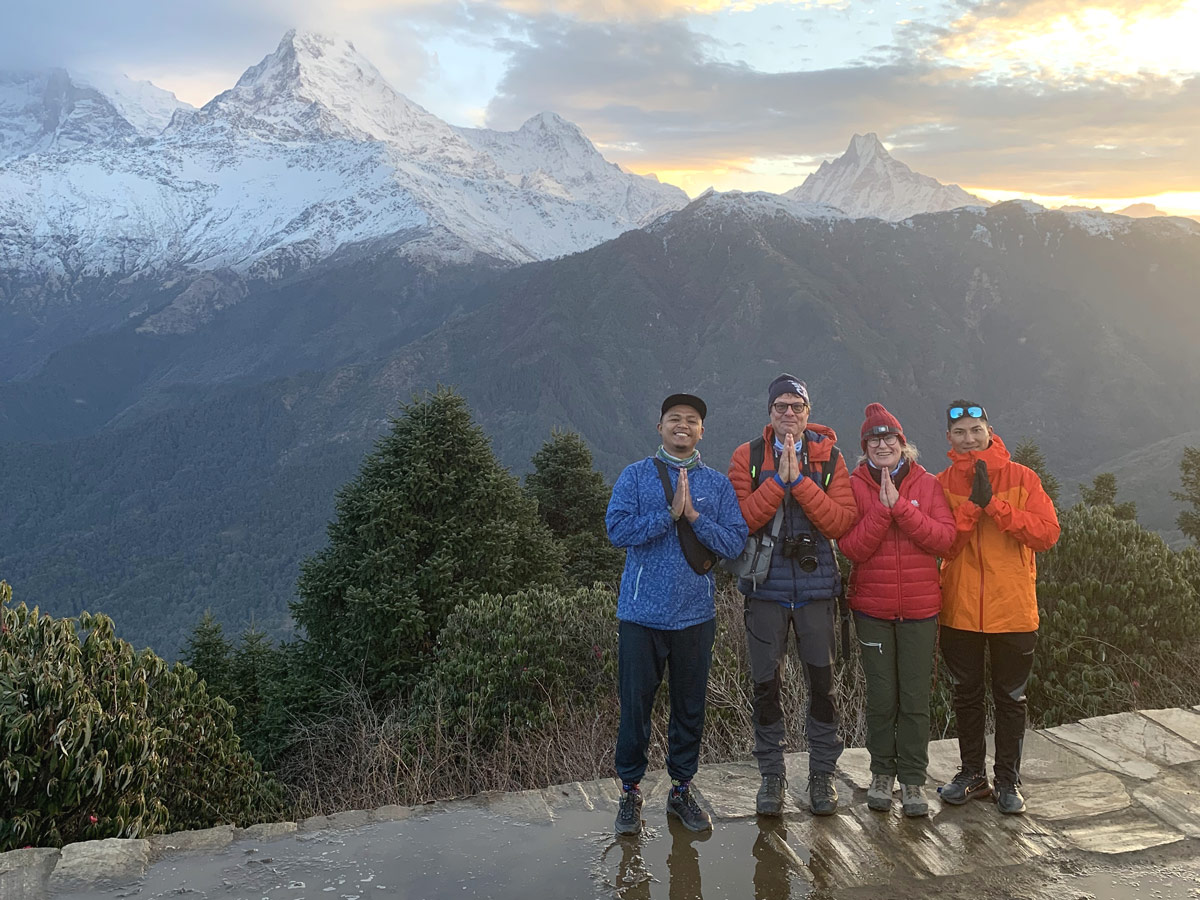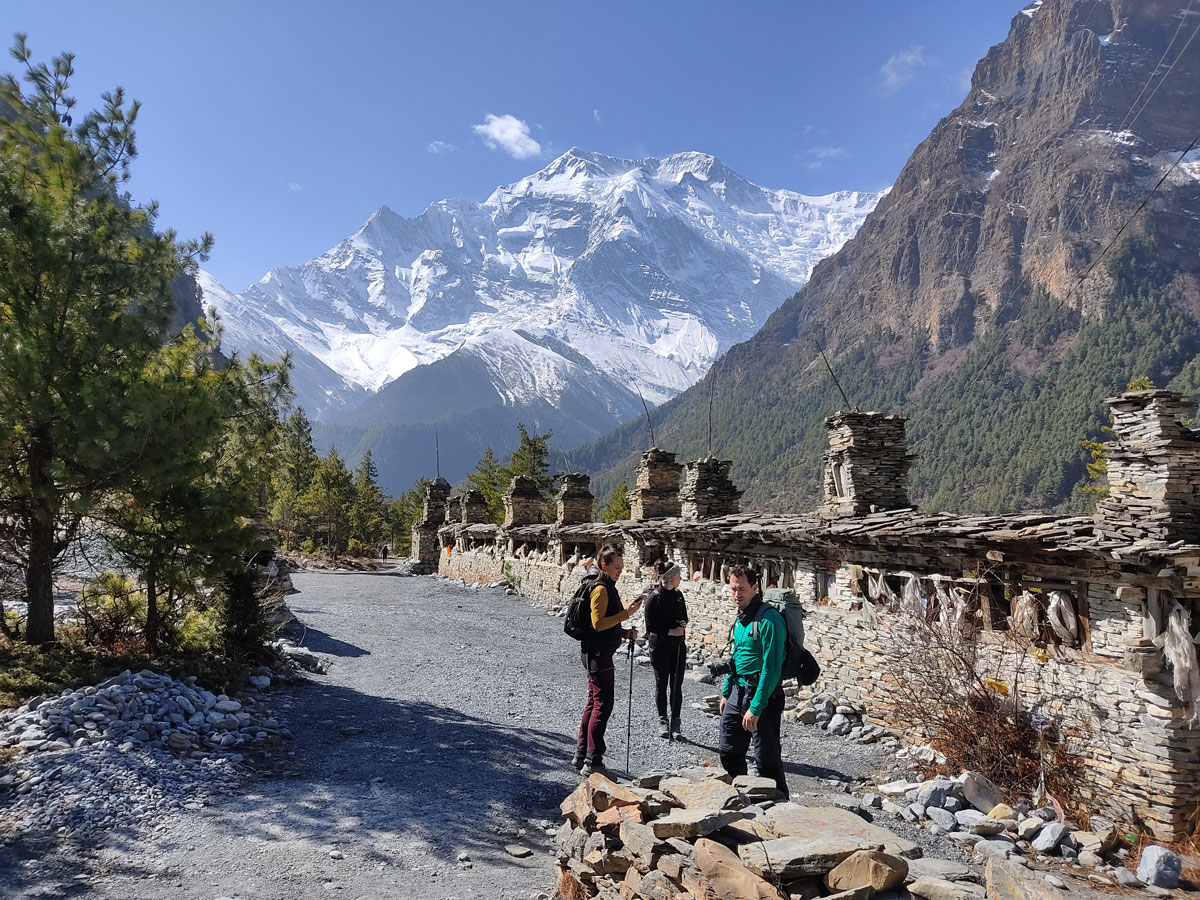Every year thousands of tourists make their way to the gateway of the Himalayas; the beautiful Nepal. Amidst them, many carry the dream of conquering the highest mountain in the world, Mt. Everest.
They risk their lives and spend weeks on their way to conquering Everest. Besides this, a few of them come with the aim of reaching the foot of the peak to get an intimate perspective of the peak without having to take on as many challenges.
While most of the trekkers succeed in completing the Everest Base Camp trek, a few find the trek as daunting and difficult as Everest itself. How difficult can it be? Spend a few minutes and see what you think?
What is the overall difficulty level of the Everest Base Camp Trek?
While the mere imagination of standing at the foot of Everest surrounded by other snowcapped giants in the realm of thin air might be formidable, the EBC trek is achievable for anyone with proper preparation and dedication.
The overall difficulty level of the Everest Base Camp trek is strenuous, and trekkers will face several challenges ranging from the daunting 130 kilometers (80 miles) length to the difficult altitude of 5,555 m (18,206 feet) at Kalapatthar.
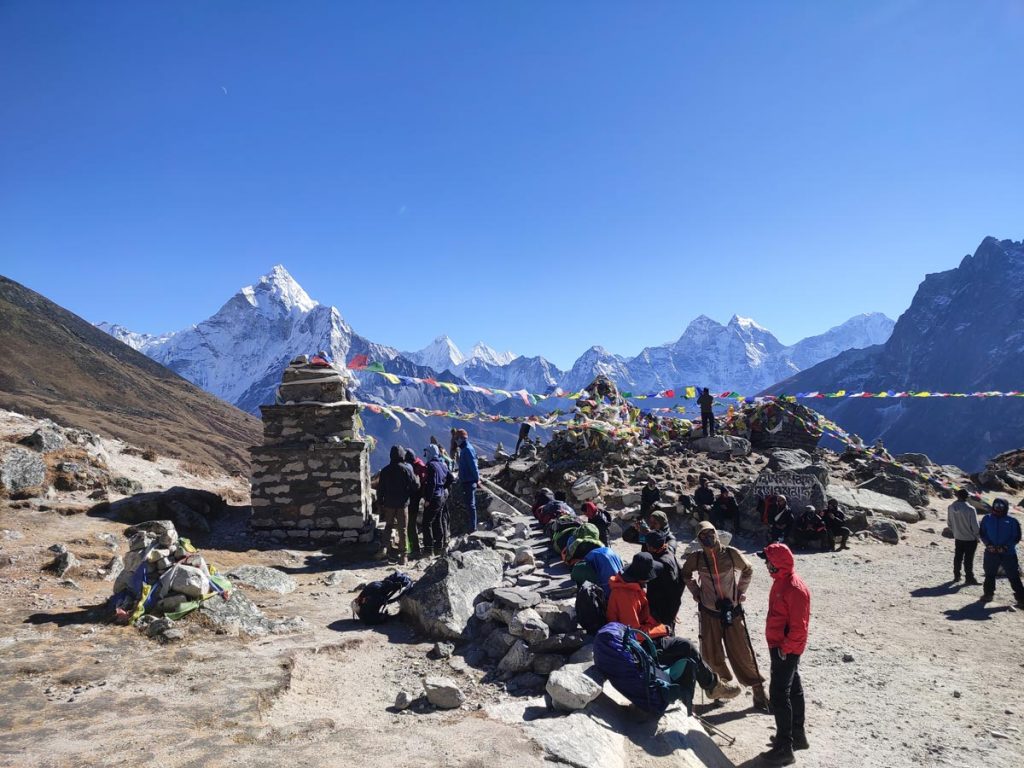
Besides this, the challenges posed by the weather and the difficult terrain can be another factor making your trekking adventure difficult amidst the limited amenities and unfamiliar food and environment.
However, the trek is not impossible to achieve, even for beginners. With prior knowledge about the challenges of the trek and relevant packing and preparation, the trek can be completed with moderate challenges.
What makes the Everest Base Camp trek difficult?
The Everest Base Camp trek difficulty is multifaceted, encompassing factors such as extensive length, demanding altitude, rugged terrains, limited facilities, rocky paths, and unpredictable weather conditions.
Length of the Trek
The EBC trek features limited to no accessibility to roads. Therefore, with no roads, the only way to get to the mountains is by walking through the Khumbu region up to Base Camp itself starting right from Lukla.
Traversing along the Dudh Koshi valley, the journey from Lukla to Everest Base Camp encompasses 65 kms (40.38 miles) of distance that must be covered on foot.
The trekkers return through the same route covering the total distance of 130 kms (80 miles). This entire journey is spread across a duration of 12-14 days depending on your itinerary and the number of acclimatization days included.
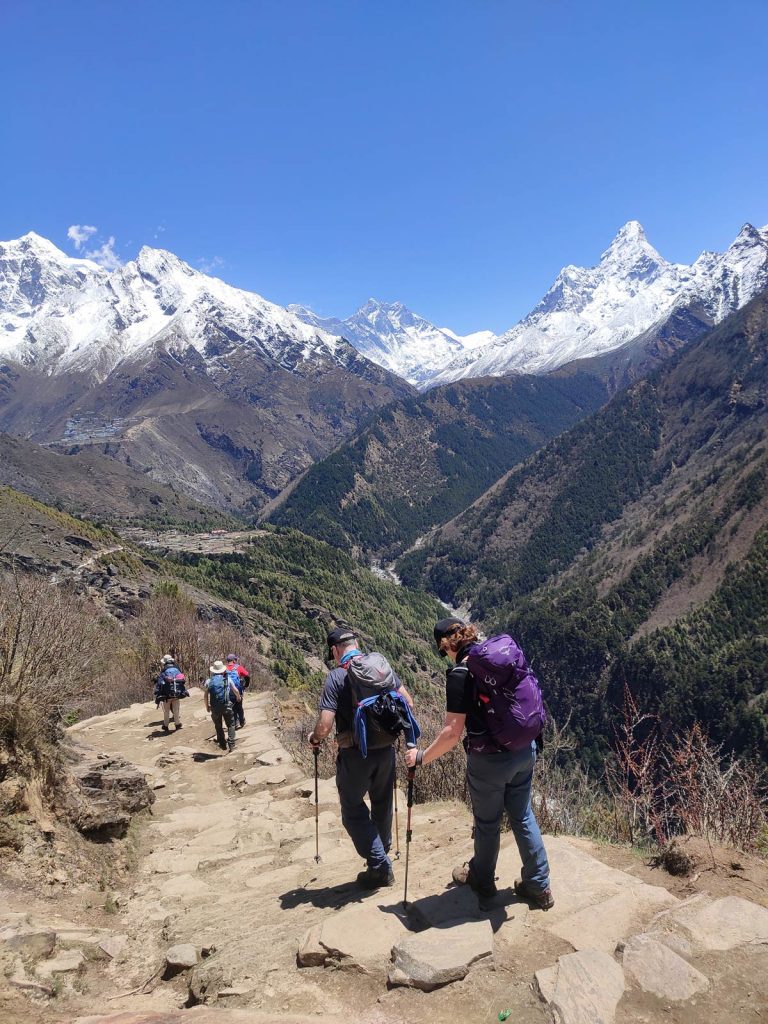
While this might look easy at a cursory glance, spending this two weeks long time in the challenging conditions of the EBC trail demands good physical and mental preparation from the trekkers.
Especially for a novice, the duration and the distance might be daunting. Therefore, it is necessary to be well prepared mentally for the number of days one must walk to reach Base Camp and back to Lukla.
Gradual ascents with a moderate pace and enough breaks are the key to tackling the daily long walks to cover the distance of the EBC trek.
Terrain
Over the extensive distance of 65 kilometers and back, the trail of the Everest Base Camp trek takes the trekkers through a wide range of terrains spread across the area of Sagarmatha National Park.
Trekkers pass through forested trails crossing lush forests of pine, bamboo and more which can be slippery at times and need more caution to tackle. You will also come across several suspension bridges adding to the thrill.
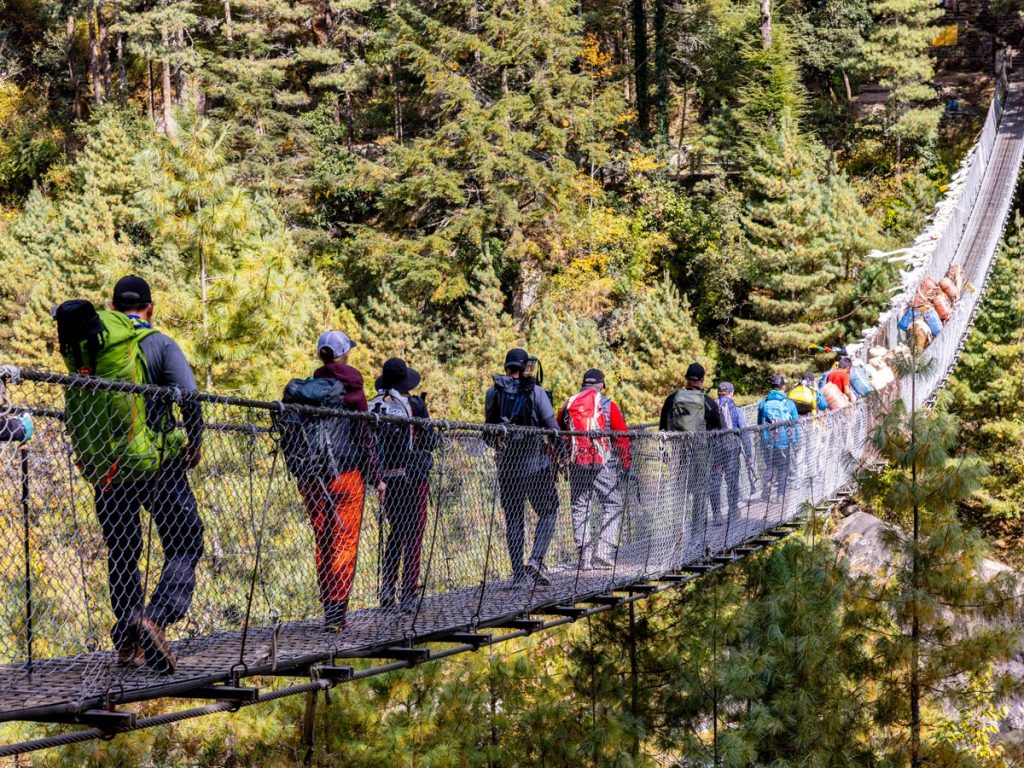
Beyond Namche Bazaar, the vegetation on the rather lush trail till Phakding starts thinning out and the trekkers see more rocky paths. In this section of the trail, proper footing is crucial to avoid slipping, especially in the descents.
A blend of several landscapes, the trek unfolds glacial paths beyond Gorak Shep as you ascend higher towards the base camp. While these terrains hold heavenly beauty, they also demand more caution of the trekkers to avoid injuries amidst these stark moraines.
Although the ascent is gradual, the trek does feature steep ascents and descents like the climb to Kalapatthar and the steep ascent to Namche Bazaar and Tengboche monastery requiring more cardiovascular strength and leg strength.
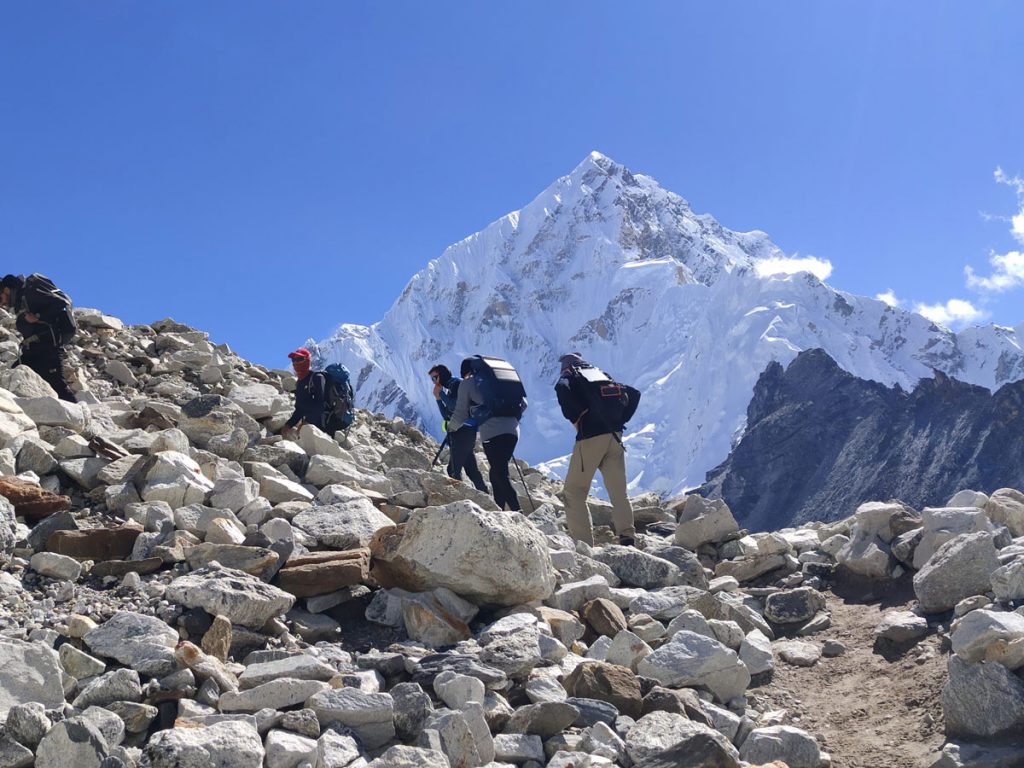
Along with that, these climbs at high passes become more strenuous due to the thin air. Therefore, some sections might feel more challenging as compared to others such as crossing an important landmark of the trek- the Thukla pass .
As beautiful as the terrain on the EBC trek is, it is equally varied. Therefore, the trekkers must be absolutely prepared with proper footwear, physical fitness, and mental endurance to tackle these terrains.
Altitude
The most challenging factor of the Everest Base Camp trek has to be the difficult altitude and duly so as the trek takes you to the highest accessible point in the world at an altitude of 5,555 meters.
The highest point of the EBC trek is at Kalapatthar, even higher than the Everest Base Camp itself. The Everest Base Camp is located at a challenging altitude of 5,364 meters while Kalapatthar lies at 5,555 meters.
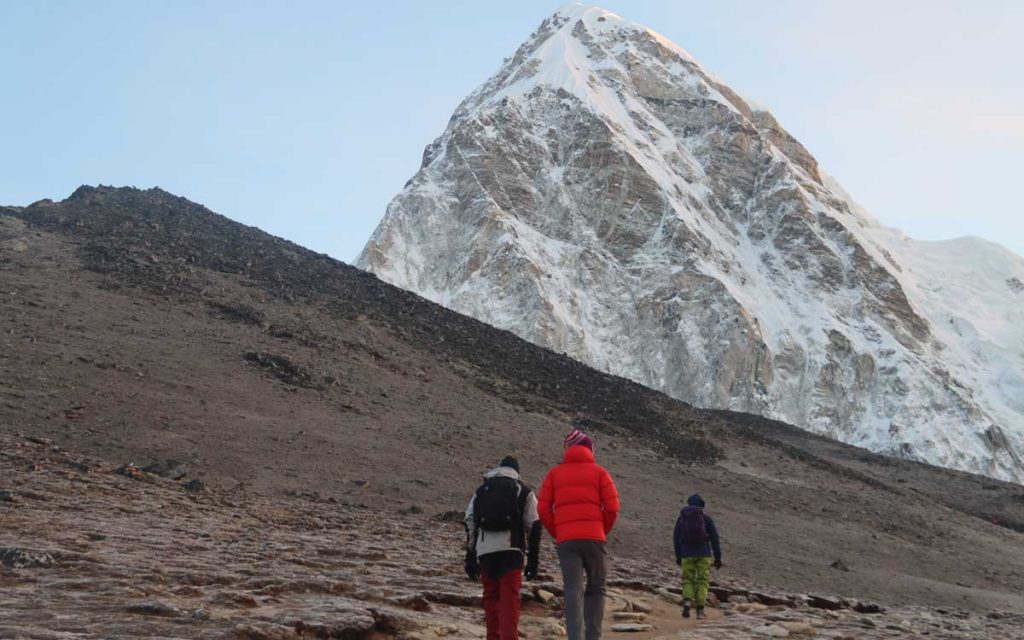
However, the challenge is not just as you reach closer to the base camp. The challenge begins as you land at the Lukla airport itself. For people hailing from lower altitude areas, the starting point of the EBC trek itself is a significant increase in altitude.
The Kathmandu airport is situated at 1,400 m whereas the airport at Lukla is situated at double the elevation of the Kathmandu airport, i.e. 2840 m. This increase in elevation is already high enough to induce a person with mild altitude sickness.
As you enter a high-altitude zone beyond 2,500 meters, physiological effects kick in given the less amount of oxygen. Symptoms of Acute Mountain Sickness like nausea, dizziness, and more onset which absolutely cannot be ignored.
The elevation increases 600-800 meters per day and the level of oxygen depletes moderately. This is one of the reasons to have proper altitude sickness awareness before embarking on the Everest Base Camp trek.
In order to prevent altitude sickness, it is necessary to walk slowly, use as many days as possible to reach base camp, have at least 2 acclimatization and rest days to adjust to the elevation and drink plenty of water to overcome dehydration.
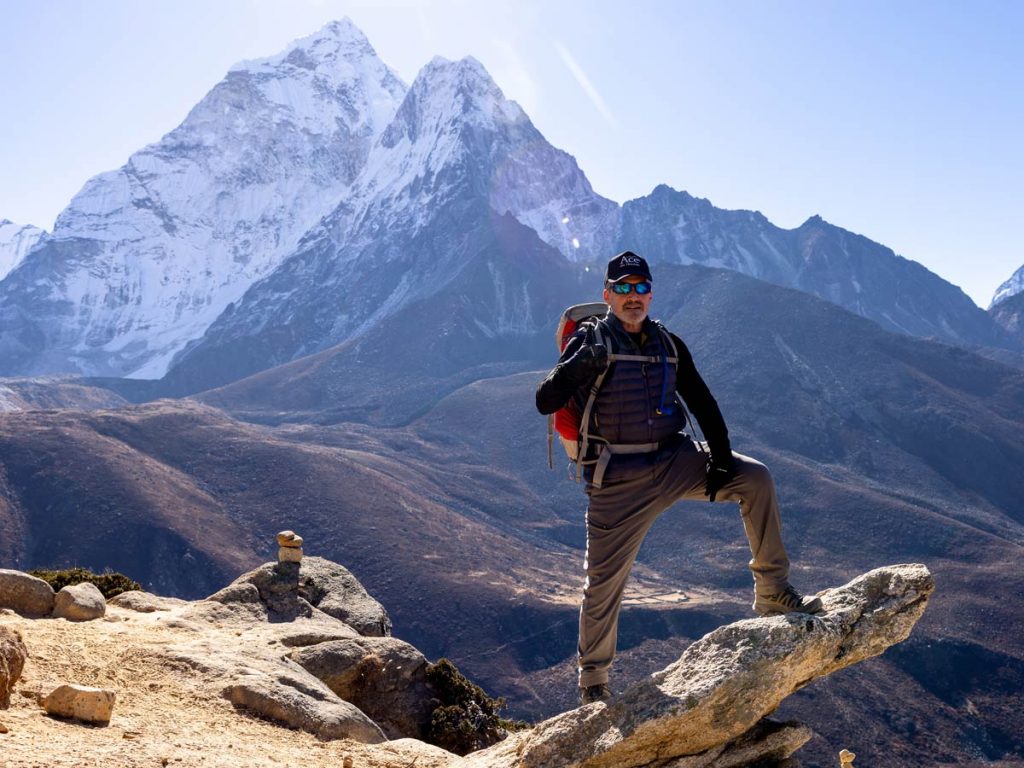
Following these instructions can help adjust to the increasing altitude throughout the trek. The most important thing to manage a risk such as altitude sickness is to integrate dedicated acclimatization days after every few days of trekking.
The acclimatization days, usually at Namche Bazaar and Dingboche helps the trekkers to embrace the basic trekking principle of ‘climb high, sleep low’ as they allow their bodies to adapt to the extreme conditions of the trek.
Accommodation
While on the Everest Base Camp trek, one of the challenges is the lack of your familiar comfort and the decrease in availability of amenities as you ascend higher on the trek.
Given the harsh and isolated environment, especially in areas around the base camp, the primary focus of the accommodations is to provide basic facilities to sustain life.
Amidst these challenges, other amenities like hot showers, internet, electricity, charging, etc. shift towards the back end. However, you do get a comfortable and warm place to stay accompanied by the incredible local hospitality.
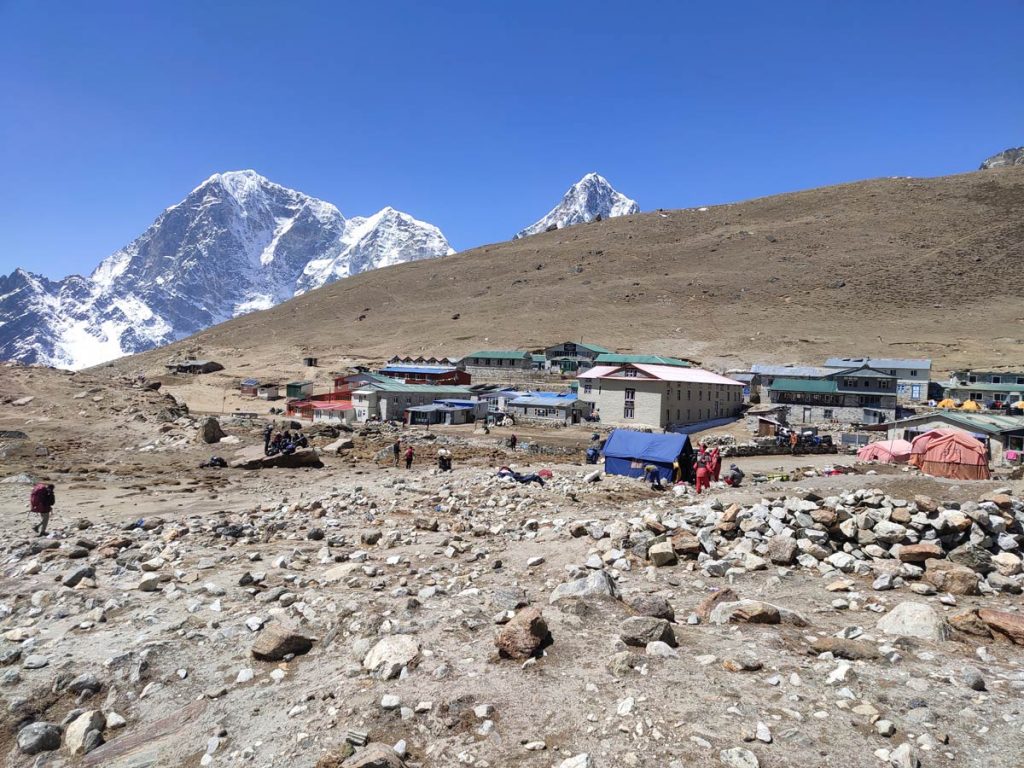
At lower elevations, you will even get access to the familiar luxuries like Wi-Fi and internet access along the EBC trek, shower and laundry services, and much more. But as you ascend, the availability decreases.
Although you won’t be roughing it up without any facilities thanks to the teahouses on EBC trek, adjust your expectations to be prepared in case these facilities are not available at some locations.
Lack of Training
Despite being one of the most accessible treks to everyone, the trek to the Everest Base Camp is no walk in the park. Trekking in the Everest region is a serious challenge which demands good preparation.
Proper physical fitness is non-negotiable for those wanting to successfully complete the EBC trek. The trek becomes less of an adventure and more of a challenge where you must drag your feet till the end if you are not physically fit.
Trekking to Everest Base Camp is within the reach of those individuals who are physically fit. It is sensible to start training as early as possible before your scheduled trek.
Conventional exercise routines which build strength, fitness and stamina, such as aerobics, including swimming, jogging, cycling etc. can be a valuable addition to your workout regime to build endurance.
Light weight-training can be beneficial, particularly if your fitness level is less than desirable. To be able to tackle the steep ascents and descents, you can get yourself in practice of climbing and getting down the stairs with an added weight.
If possible, hiking up and down the hill or walking at least 1 to 2 hours a day can help build stamina and help to increase lung capacity and focus when you are at higher elevations.
Indulging in these activities gives you the taste of the most dreaded part of the trek- the sore muscles at night after a long day of walking. Once you are used to it, your journey becomes a joyful adventure.
Only with proper planning and proper training, one has the best possible chance to successfully and safely reach base camp and experience one of the most extravagant hikes in the world.
Mental Preparation
The Everest Base Camp trek requires not just physical endurance but mental endurance and resilience too. The extreme conditions of the trek can be testing on the mental state of the trekkers too.
The long days with exhausting walks along the challenging terrain without any familiar comfort to go back to can take a toll on your mental health. Being away from your loved ones adds to the challenge.
Therefore, you must be mentally prepared to tackle all the setbacks of the trek. It is important that you set realistic expectations and embrace the challenges of the EBC trek.
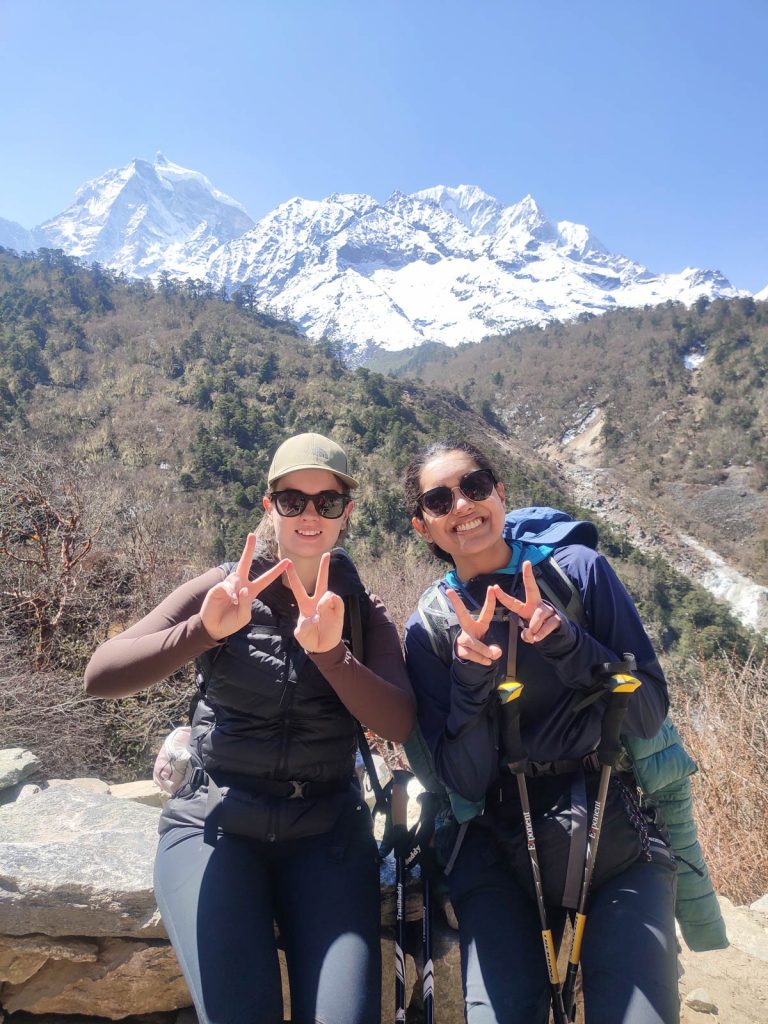
Whenever you get connection in the trek, talking to your loved ones over texts or calls can help give you the much-required boost in your mental state.
Besides that, carry board games or other games like cards so that you can enjoy yourself with your fellow trekkers while uplifting your mood as well as their as all of you are on the same boat.
You can also carry your preferred books and novels to read at the teahouses or a diary for you to journal your experiences in real time.
Prior Experience
While having prior trekking experience is an invaluable asset on the EBC trek, it is not mandatory. Having tackled similar treks can help you in more than one way.
Trekkers who have been on other treks have a good physical fitness along with the familiarity with the rigors of the daily long walks. Their body is also experienced in tackling the high altitude.
Also, they are familiar with the Himalayan culture and the local food, which leads to no problems in terms of nutrition. Having trekked before, they have firsthand knowledge of what to pack and what to omit from your backpack.
However, do not be intimidated if you are a first-time trekker. With proper knowledge, guidance, and preparation, you can also tackle the challenges of the EBC trek rather conveniently.
You must put in extra efforts like being in a proper workout routine, researching and preparing, building mental endurance, and selectively curating the packing list for Everest Base Camp trek.
This combined with the guidance of a guide, you will be all set to conquer the challenges of the EBC trek.
Improper Diet/ Food Poisoning
Improper diet can be a major challenge on the EBC trek. Although the food on the EBC trek is quite nutritious and healthy, there are cases where trekkers have returned to Kathmandu midway due to food poisoning or improper diet.
So, the question is what should be eaten during the trek? Well, since the Everest Region is a Buddhist area, slaughtering of animals is strictly prohibited.
For this reason, meat is flown over to Lukla and carried by porters or yaks to the upper regions. Thus, eating food items containing meat is not recommended at all since there is a threat of food poisoning.

It is best to eat where you stay and delve into the local Nepali cuisine including rice, lentils and curry (dal, bhat, tarkari). The regular food will be good enough to keep your body healthy.
Sticking to a vegetarian menu is advisable as it provides you with enough fuel to keep you going along the trek. Drinking water can easily be bought at the local guesthouses along the trekking route or one can carry purification tablets as well.
Unpredictable Weather
Although open all year round, travelling to EBC in every other season of the year can be quite challenging due to the difficult and unpredictable weather and temperature in the Everest region.
Many first-time trekkers are surprised to learn about the incredible temperature range that may occur in a given day. The nights are much cooler than the daytime hours in the Everest region.
During the day, the temperatures can reach as high as 25 degrees C (77 Degrees F), only to dip down as low as -20 degrees C (-4 Degrees F) in less than 24 hours.
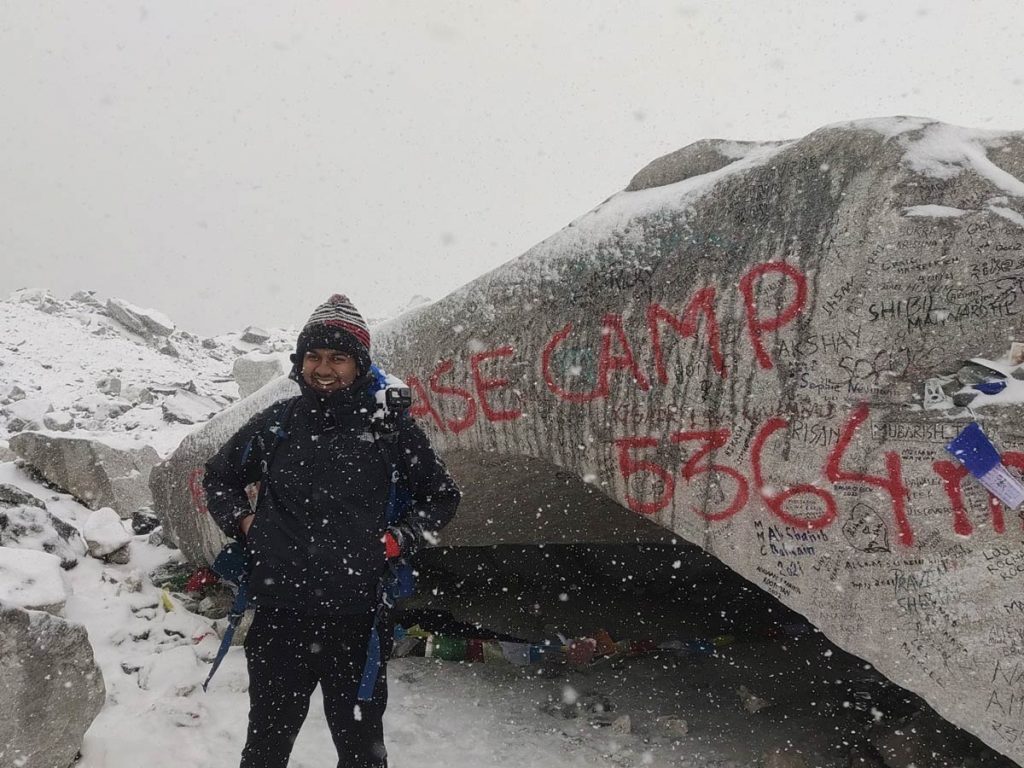
While there’s no way to know exactly what each day in the mountains will bring, the weather and temperature ranges tend to be somewhat predictable based on the month and season.
The spring season spanning from March to June and the autumn season spanning from mid of September to November are the best time for the Everest Base Camp trek.
On the contrary, the monsoon season, i.e. July, August, mid of September brings uncountable challenges in the form of slippery trails in the forests along with the rainclouds obstructing your breathtaking views.
Be prepared for rainfall almost every day if you are trekking in this season. The chances of landslides and rockfalls are also high in the monsoon along with the risk of slipping and injuries.
During the winter season, i.e. December to February, the temperature becomes unbearable on the EBC trek. Although the snowcapped views of the trail are worth all the challenge, you must take extra caution and carry micro spikes as the trail is covered in snow.
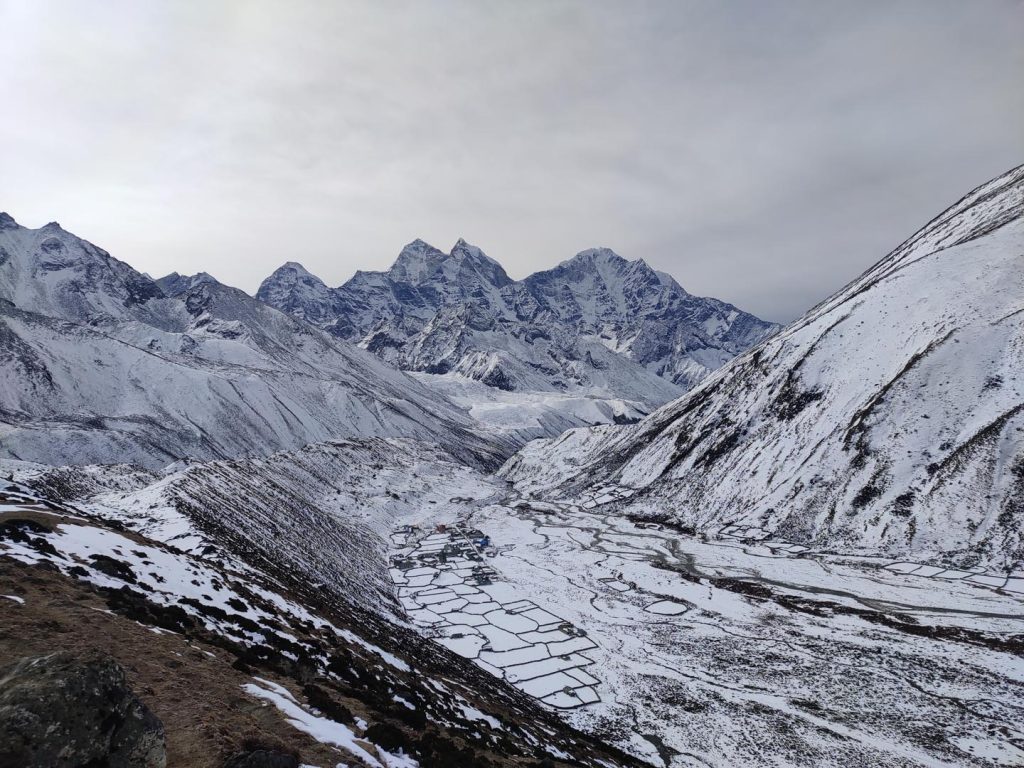
You might even encounter avalanches while you are heading towards the Everest Base Camp from Gorakshep at times. Therefore, be on the lookout.
When you are trekking across the Everest Base Camp, it is highly important that you are prepared for the curveballs that the mountain throws. Expect anything from strong wind to unexpected cold to sudden downpours and snowfall.
Stock up all the gear and clothing required to tackle all the weather conditions as no matter how much you rely on weather forecasting, there is always a chance of it going wrong as the weather in the Himalayas is less and less predictable.
Flight Delays to and from Lukla
Known as the most dangerous airport in the world, the Lukla Airport is situated in a wonderful valley surrounded by high mountains. Due to this reason, landing and taking off from Lukla is quite difficult and technical.
The airport also has a single short runway making it even more dangerous yet thrilling. However, that is not much of a danger as the pilots need to have special milestones to fly in that airport.
The main challenge here is the constantly changing weather and the delays in the airport. The weather in the area can be unpredictable and is likely to change every few hours resulting in flight delays or cancellation.
Usually in the monsoon months like June to September, the weather may not allow for the take-off since the visibility may not be as good. However, flight delays cannot be guaranteed in other seasons as well.
Flights have been cancelled and the travelers have been stranded in the airports waiting to fly over to Lukla or head back to Kathmandu for many days. During such situations, we choose to fly our clients in a helicopter as far as possible.
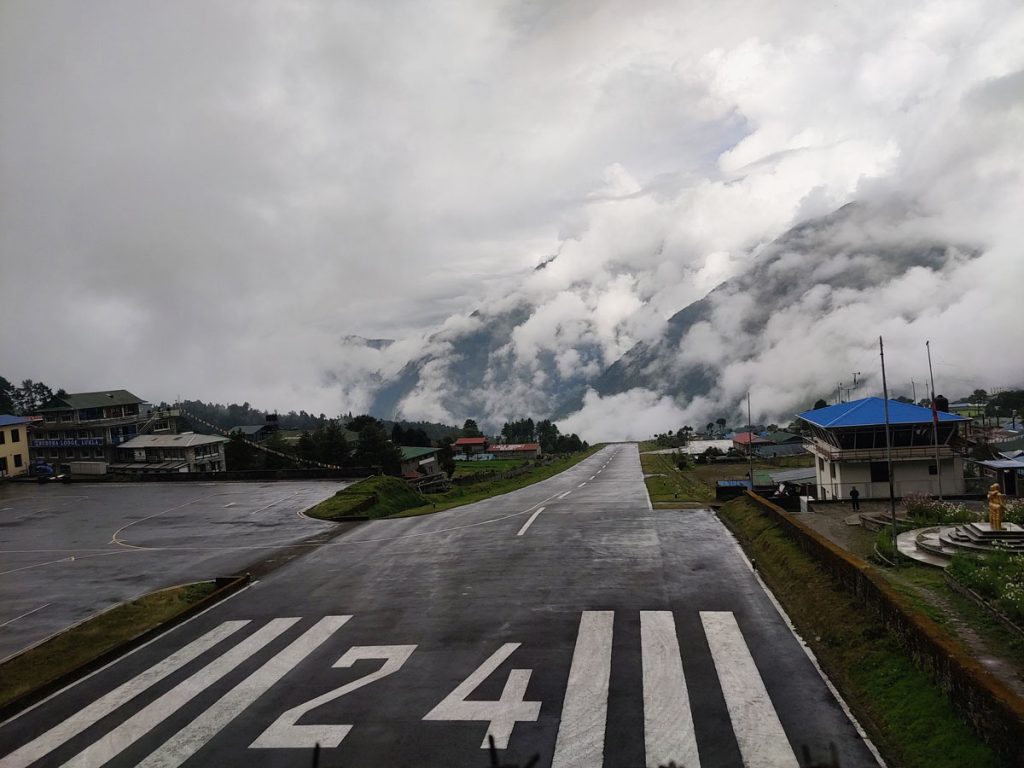
During these situations, full coverage insurance including air ambulance also comes in handy as you won’t have to be stuck in the dilemma of the unknown.
The flight delays to and from Lukla therefore fall in the list as one of the most difficult and unpredictable things during the EBC trek.
Conclusion
Therefore, the comprehensive experience of the Everest Base Camp trek is beyond the binary of easy and hard as there are many factors determining how challenging the trek is going to be for you.
This Himalayan adventure provides an experience that is new and specific to every trekker. Therefore, embrace the challenges and conquer your dream adventure with thorough preparation to tackle every hurdle that comes your way.
